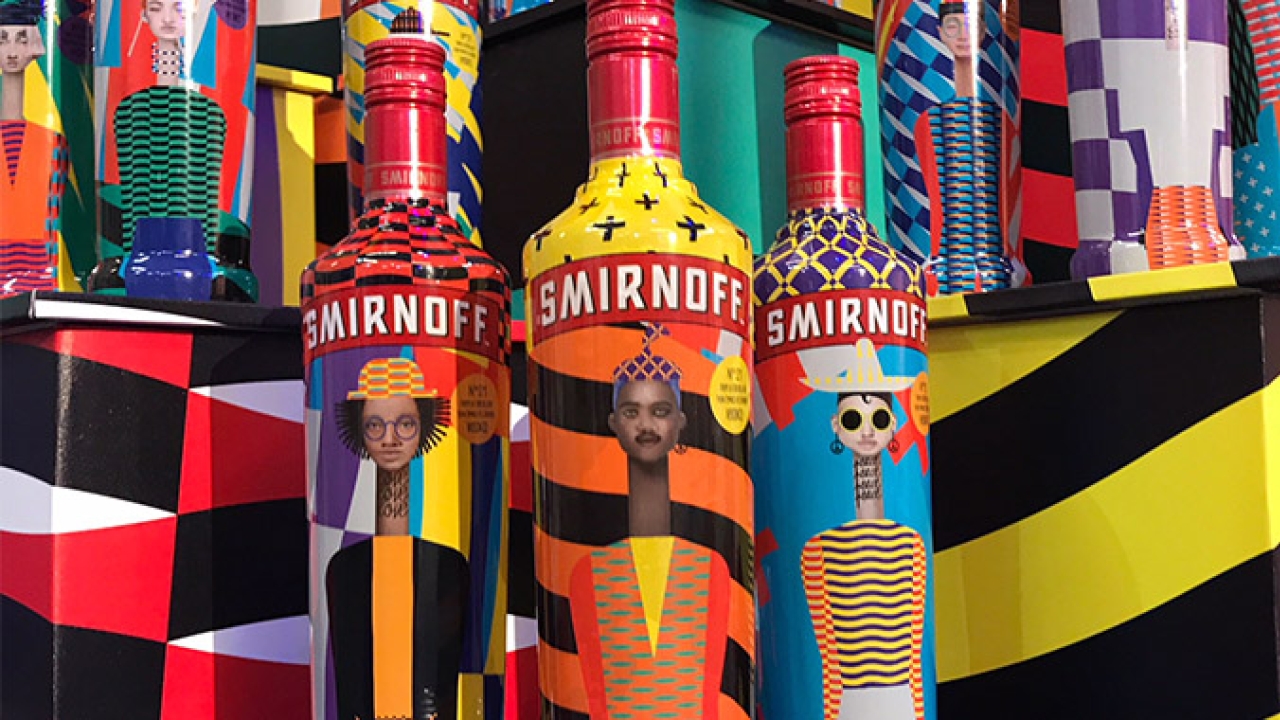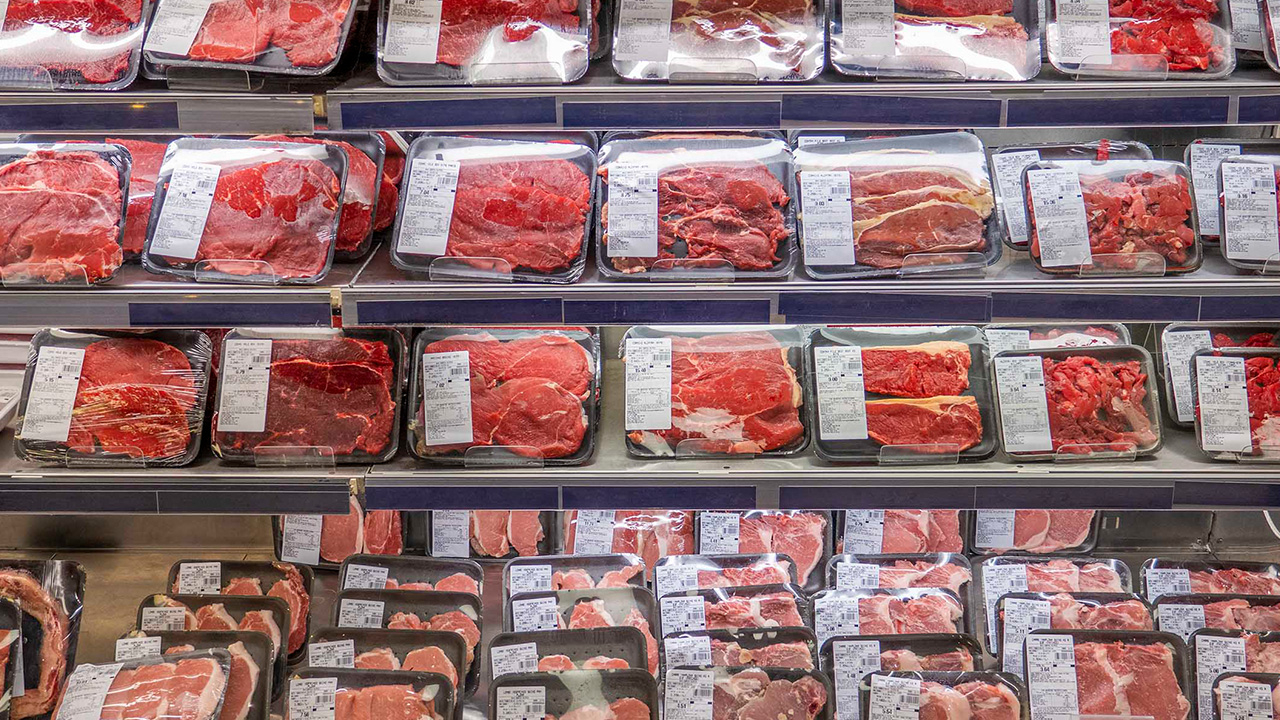Shrink sleeves: inks and surface treatments

In the fight for attention on packed supermarket shelves, shrink sleeves offer 360 degree coverage of graphics on a product container, allowing more display area for the brand owner to get its message across to the potential consumer. Because the design is printed on the inside of the label it is much more resistant to scuffing and damage. The sleeves can be printed using several different print technologies including digital. Shrink sleeves are used in a wide range of product applications including food and beverages, pharmaceutical, household products and many more label markets.
Inks for shrink sleeve applications
According to Mark Hill, senior VP of R&D for INX International Ink, a big hurdle to be overcome in formulating inks for shrink sleeves is maintaining ink adhesion and flexibility after the shrinking process. ‘The ink becomes compressed and can become rigid when it shrinks, which means that ink cracking is a major issue,’ he says. ‘This is compounded when using thicker ink films, so each printing process presents its own challenges because the ink film thickness is unique for each process. A major issue for shrink sleeves is in the area of product resistance. Bottles are generally filled and labeled simultaneously so the packaged product can sometimes become trapped in between the label and the bottle. The ink needs the ability to resist bleeding when packaging household cleaners such as glass, solid surface, or bathroom cleaners.’
COF (coefficient of friction) control is another major challenge for shrink sleeves. ‘When a label has 100 percent ink coverage, there is little concern for COF control because the ink surface is uniform throughout the body of the label,’ continues Hill. ‘But when, for example, ink coverage is 50 percent, COF can be an issue. The printed areas of a label can have a much lower COF than the unprinted areas. The difference can cause application issues on the packaging machines, so it is typical to apply a clear coating over 100 percent of the label area to make the COF consistent across the entire label.
‘Brand owners typically want the clear area to look clear so the coating formulation must not contribute haze to the clear areas of the label. In digital printing, the ink films become even thicker, so ink flexibility and adhesion become even more of a challenge to be overcome.’
The film surface needs to have a certain level of treatment in order to ensure that the ink adheres and prints properly on the substrate. The level of treatment required depends on the type of ink being printed. ‘Generally, water-based inks need a higher level of treatment than solvent inks due to the inherent surface tension of the ink itself,’ says Hill. ‘Since solvent has a lower dyne level than water, solvent inks tend to have better success in adhering and wetting out on lower dyne substrates. PET shrink films are not a film we see typically needing to be treated inline because they tend to hold their treatment level much better than olefin films.’
Inks can be formulated to have some recyclable attributes to the packaging it is printed on. ‘We formulate inks to enable recycling,’ says Hill. ‘An ink may wash off a plastic or film substrate so that the plastic can be recovered for reuse. There are always challenges when making an ink “de-inkable”. Sometimes we need to formulate inks to have certain properties such as resistance to water, chemicals or oil. Some of these formulated resistant properties make it difficult to remove the ink from the substrate. Ink formulators sometimes need to balance the properties of ink resistance – and consider how the ink will react in a typical recycling process – in order not to inhibit the package being printed from being recycled effectively.’
Recently INX International Ink released Genesis GS washable label inks, which in March 2020 were recognized by the Association of Plastic Recyclers (APR) as meeting or exceeding the group’s strict testing protocol for washable and recyclable PET shrink sleeve applications. It maintains properties in accordance with APR guidelines required for shrink sleeve applications and exhibits bleed resistance in caustic bath solutions. Since the ink is separated from the substrate and removed from the label material during the bath, a complete recyclable package is a viable option.
According to Matt King, technical service manager, Pulse Roll Label Products, ink formulation plays an important role in the printing of shrink sleeve labels and producing a suitable UV flexo ink for this specific application can present certain technical challenges.
‘There are several main reasons why the ink formulation is so important,’ he says. ‘Firstly, it is critical that inks have the suitable shrink characteristics to ensure there is no distortion or cracking and that the inks maintain their flexibility after being shrunk. UV flexo inks must cure at high speed to avoid set-off or blocking and they must also retain adhesion to the thin filmic substrates used for shrink sleeves such as GPET, PVC, OPS and PLA.
‘With different surface properties, it is a technical challenge to formulate inks that can achieve optimal press and print performance on multiple film substrates. Our PureTone UV flexo ink system, with its high color strength, tailored adhesion properties and shrink characteristics, is formulated to print on a variety of shrink films as well as coated papers, films and labelstock. Due to the diverse nature of shrink films, printers are always recommended to test thoroughly prior to commercial production. But having one ink system that can print traditional self-adhesive, wrap around labels and shrink sleeve labels is a definite plus for the narrow web printer who also has shrink sleeve capabilities.’
High color strength is necessary to print high quality, bold and vivid designs that these days are often seen on shrink sleeve wrapped bottles and cans, King maintains. ‘Surface slip is a significant characteristic that needs careful consideration when formulating inks and varnishes for shrink sleeve applications. The coefficient of friction (COF) has to be controlled to get the right balance. For best performance on high-speed bottling lines, a low COF (high slip) is required to enable sleeve labels to be seamed and then applied and shrunk at speed. This high slip characteristic is especially important for ink printed using the final station, which is usually an opaque white ink. White inks play a key role in the printing of shrink sleeves and, as well as COF, high resistance properties play a part in ensuring that the film does not scuff or scratch easily. Much like other inks, opaque whites must also have good adhesion and be able to withstand the shrinking process. Our PureWhite opaque white inks, both first down white and shrink sleeve white with low COF for high slip, were formulated to achieve the high opacity and density that was traditionally only achieved through screen printing.’
A converter’s viewpoint
Berkshire Labels is a well-known UK-based label and shrink sleeve converter. The latest conventional press to be installed is a Mark Andy P9E which was chosen initially for its ability to grow Berkshire’s shrink sleeve business. Currently the volume of paper and film-based substrates used by the company is roughly equal, with film – including shrink sleeves and roll-fed wraparound – growing faster. Although well equipped with digital print and converting technology, Berkshire Labels estimates that flexo production still accounts for about 60 percent of its output.
Berkshire Labels is undertaking an expansion program, the plan being to build the company up to a GBP 20m operation by separating the digital print and finishing operations, and housing the growing shrink sleeve label operation in a separate building.
The success and reputation of Berkshire Labels has been achieved by working closely with brand owners and design agencies, which has particularly driven new business with start-ups and ‘challenger’ brands in the soft drinks, toiletries, craft brewery and spirits segment. ‘Beer, wine and spirits has become a big area of growth for us, and particularly for shrink sleeves printed either flexo or digital with high end embellishments,’ says MD Paul Roscoe. ‘For customers who are more used to buying shrink sleeves from bigger converters we offer shorter lead times. Frequently their expectation is a 3-4 weeks lead time, but we are often capable of delivering the job in only 4-5 days after receipt of artwork.’
Berkshire’s increasing proficiency in shrink sleeve labels was recently confirmed by winning an award in the 2019 AWA International Sleeve Label Awards competition.
Stay up to date
Subscribe to the free Label News newsletter and receive the latest content every week. We'll never share your email address.


